A field guide to sparrows could be effectively rendered in black and white. One must rely upon size, shape, habitat, habits, song and, most important, plumage patterns of their heads and undersides.
A female Red-winged Blackbird might pass as a sparrow, but take a close look at its substantial pointed bill, an indication that it is omnivorous, adapted to eating insects as well as seeds and grain:

A female Rose-breasted Grosbeak may be sparrow-like, but is much larger and has (duh) a huge bill:

Winter Indigo Buntings can look somewhat like sparrows, but lack prominent streaking:
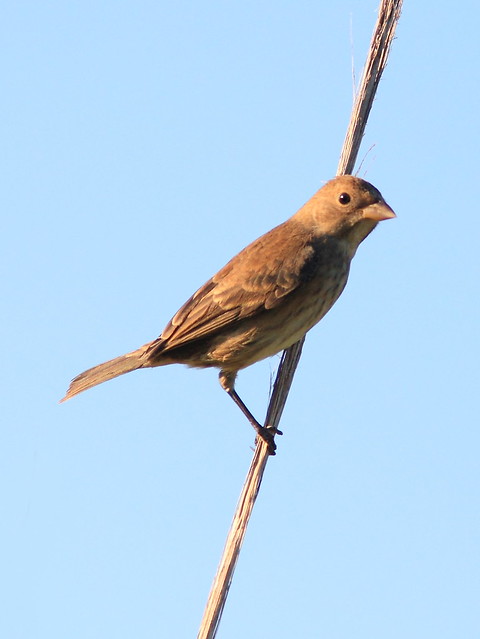
A female Purple Finch might cause confusion, but its voice, conical bill, heavier body and habit of feeding as flocks in the treetops help distinguishing it from sparrows, most of which are more commonly found on or near the ground:

The tiny Pine Siskin has a thin bill and rather plain face pattern, usually shows some yellow in its wings, and may be seen extracting seeds from spent flower heads, often in the company of goldfinches;
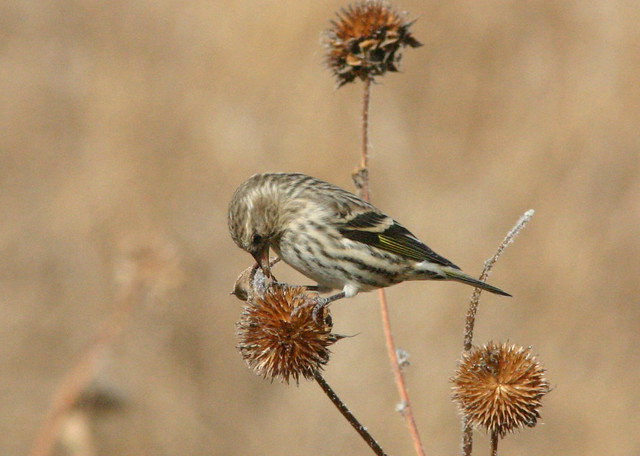
Song Sparrows vary considerably but have a basic distinguishing facial pattern:
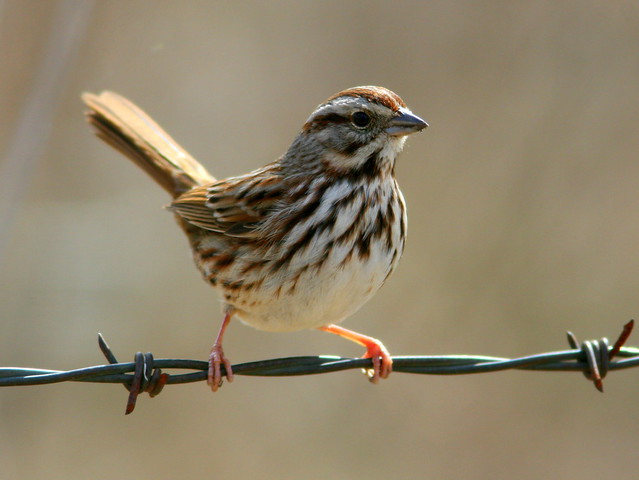
The large size and rufous (but sometimes slate gray) color helps identify a Fox Sparrow, so often found scratching noisily among the dry leaves:
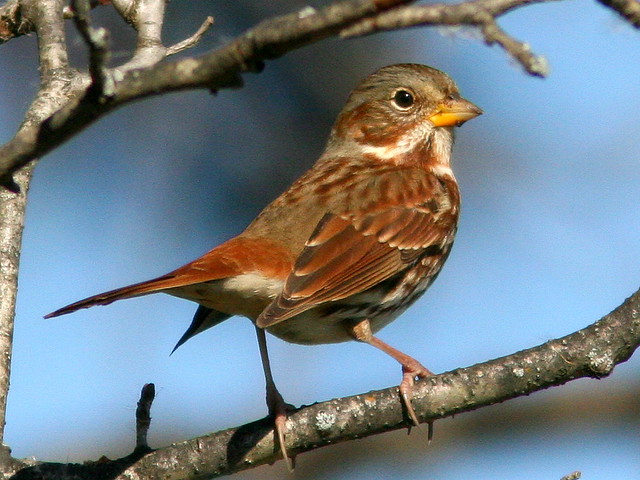
The Vesper Sparrow's belly is sparsely streaked and it has white outer tail feathers and a rusty patch on its shoulder:
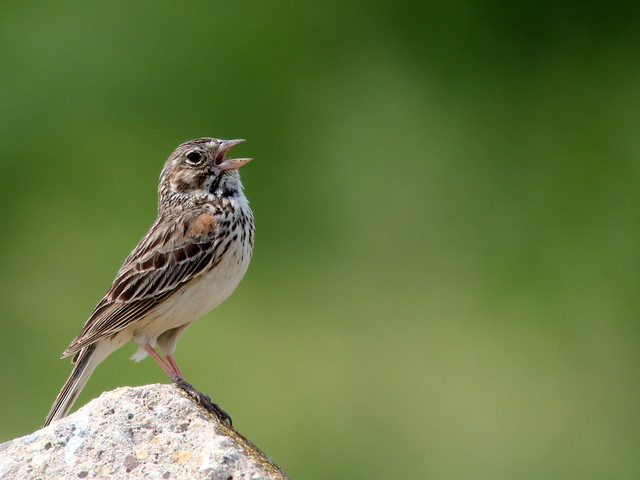
The Savannah Sparrow is a bird of open fields and shrubby borders. Its coarse streaks may resemble those of a Song Sparrow but it is smaller and has a proportionately shorter tail. Its face pattern and the usual presence of yellow over the eye also helps in recognizing it.:
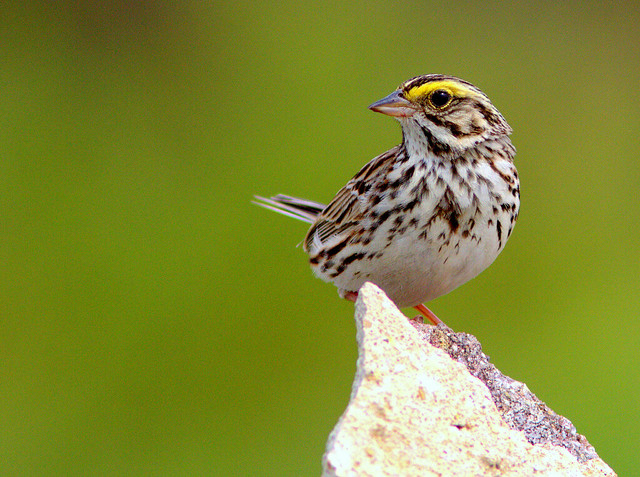
The Swamp Sparrow likes wet places and has rich chestnut brown on its wings and tail, a reddish cap (in summer) and a white throat:

Lincoln's Sparrow may lurk in the underbrush. Note that the buffy brown cast to its "whisker," upper breast and sides of its belly, underlying narrow stripes. It often raises its small crest:
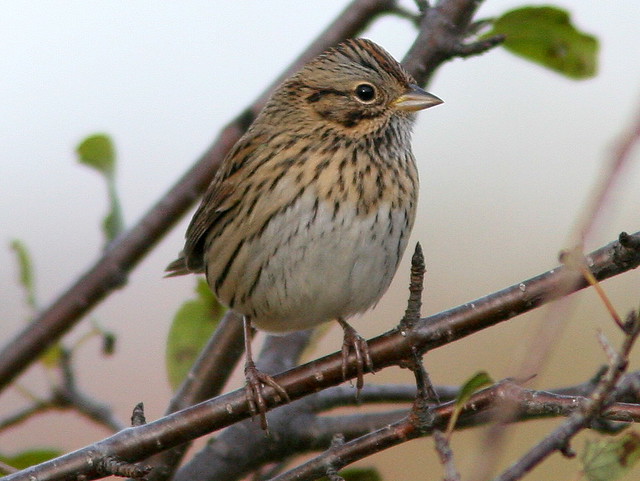
White-crowned Sparrow is large and distinctive:
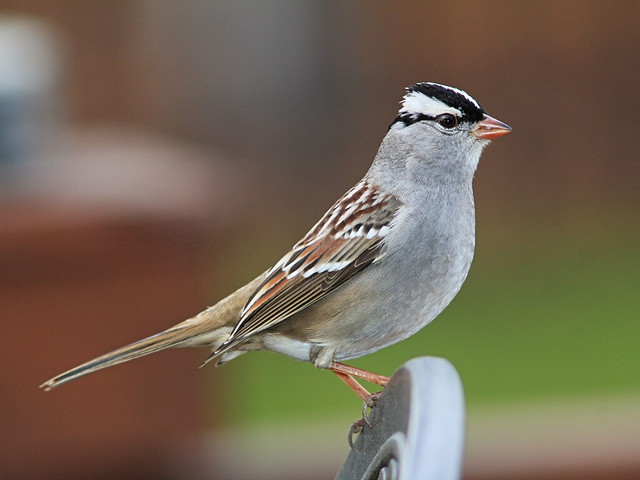
Immature White-crowned Sparrows may retain a brownish crown for a couple of years:

The White-throated Sparrow usually has yellow in front of its eyes in addition to its distinctive throat:
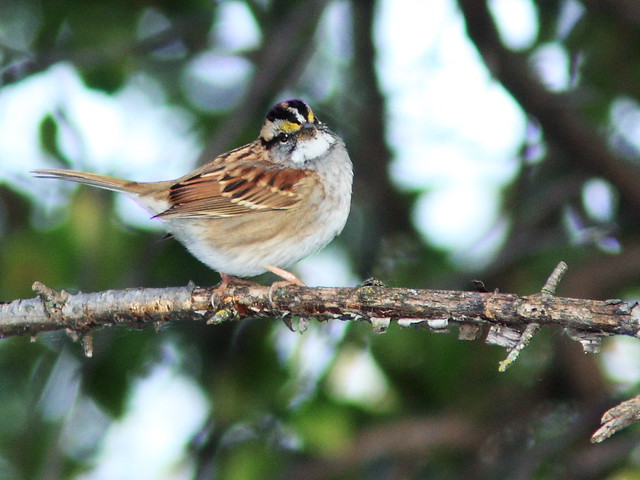
The reddish cap and a black line that goes all the way through the eye identifies a Chipping Sparrow in its summer plumage:
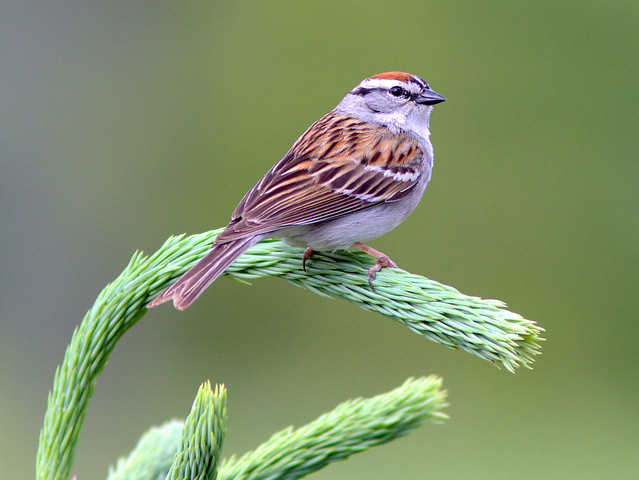
The demure Field Sparrow has a long tail, pink bill and bland face. Its song often gives away its location:
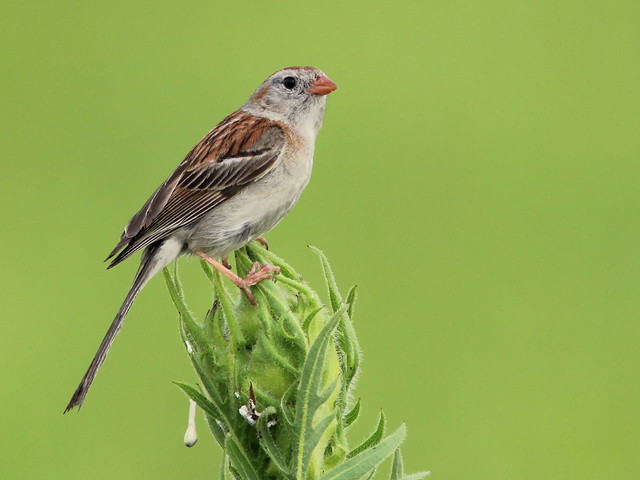
The American Tree Sparrow is a northern species that visits Illinois in the winter. It has a reddish brown cap and line behind its eye as well as a central dark breast spot:
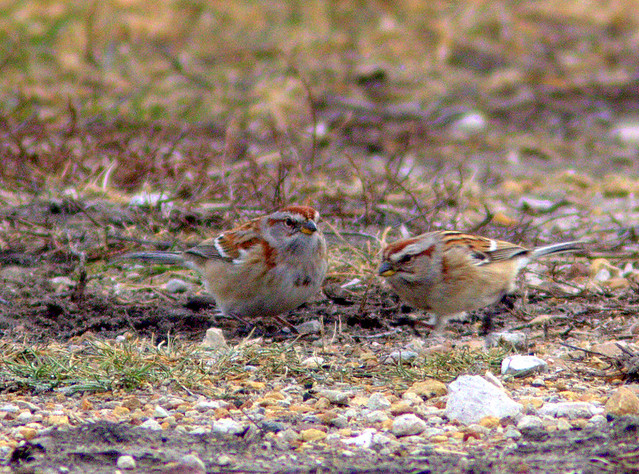
The otherwise plain face of the Clay-colored Sparrow has a contrasting brown cheek patch with a dark border, and light gray extends up the back of its neck:

Grasshopper Sparrow is a small and short-tailed bird of the prairie with a big bill, white eye-rings, and looks flat-headed. :
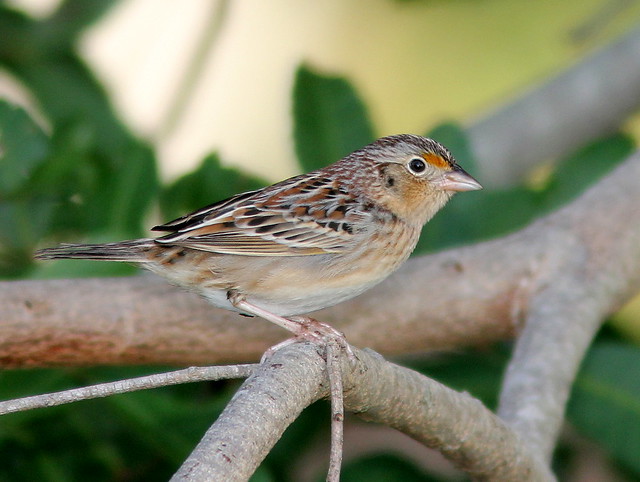
The rare and secretive Henslow's Sparrow is also small and has a greenish cast to its head:
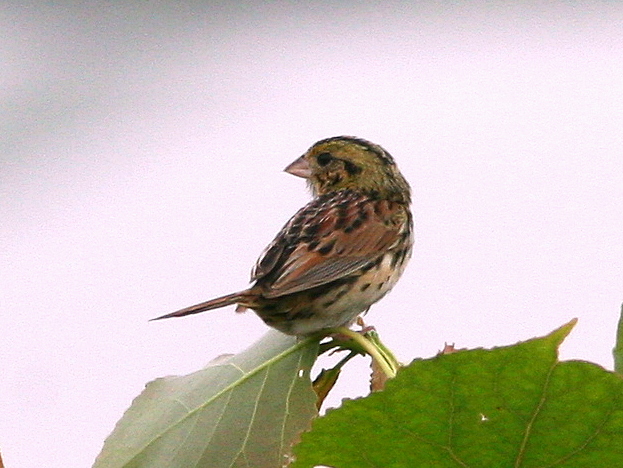
The reclusive Nelson's Sparrow sports lively shades of orange on its face and breast:
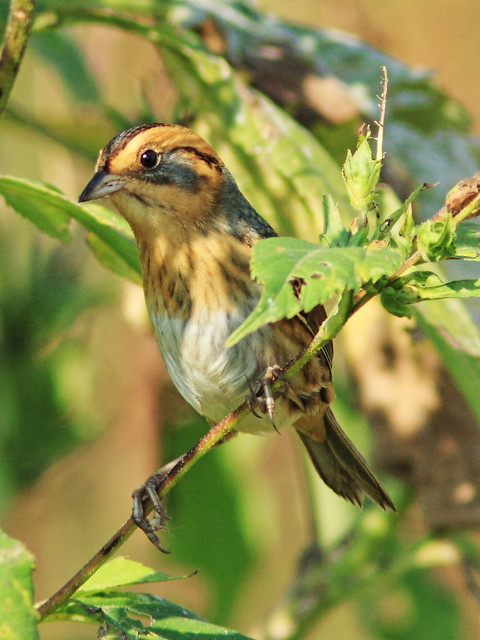
A resident of the southwest, the Black-throated Sparrow exhibits a unique face pattern. I took this photo in the eastern foothills of Albuquerque, New Mexico:
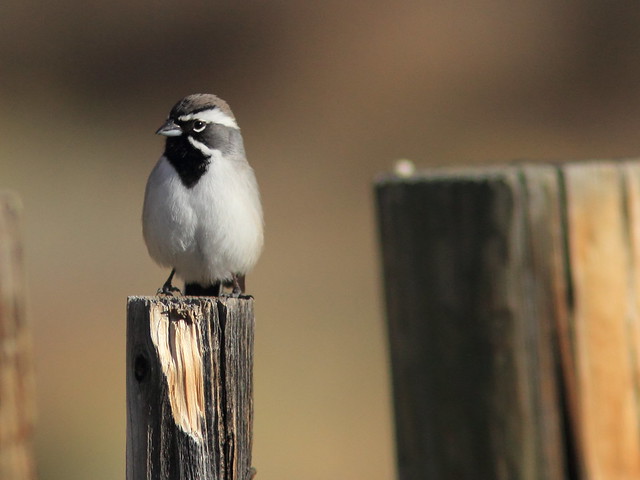
The Lark Sparrow has a quail-like face pattern. Before I acquired a DSLR I took this photo with a 2 megapixel pocket camera through a spotting scope from inside our New Mexico living room:
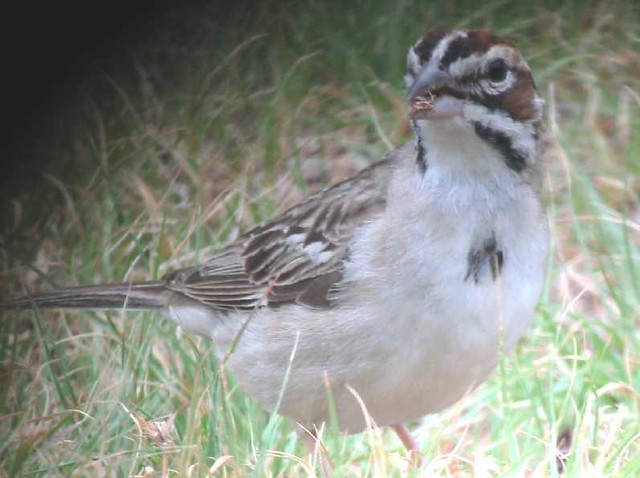
I photographed this Rufous-crowned Sparrow in the Grand Canyon. Its features include its large size, ground-dwelling habits and prominent white eye ring:
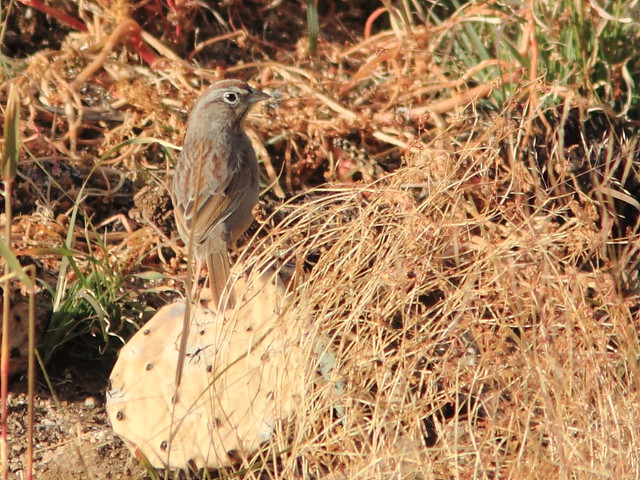
The Black-chinned Sparrow is another bird I found in the Grand Canyon. Its plain gray head makes it look somewhat like a junco:
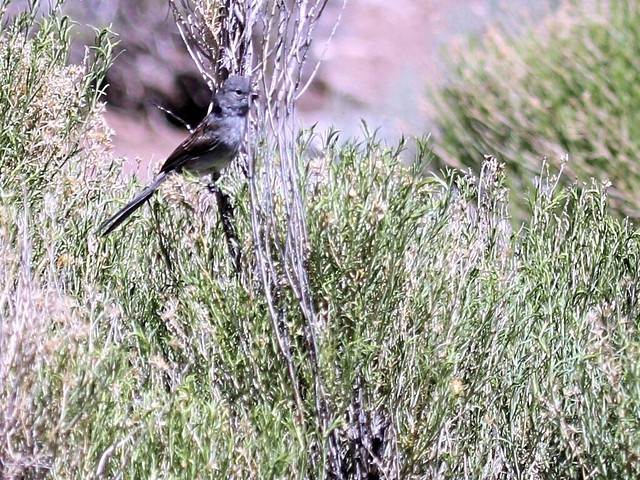
Juncos are considered part of the sparrow clan. Adults lack the streaking so typical of other sparrows.
The Dark-eyed (Slate-colored) Junco is a common winter bird in the northern central and eastern states. It is commonly called "snowbird.":
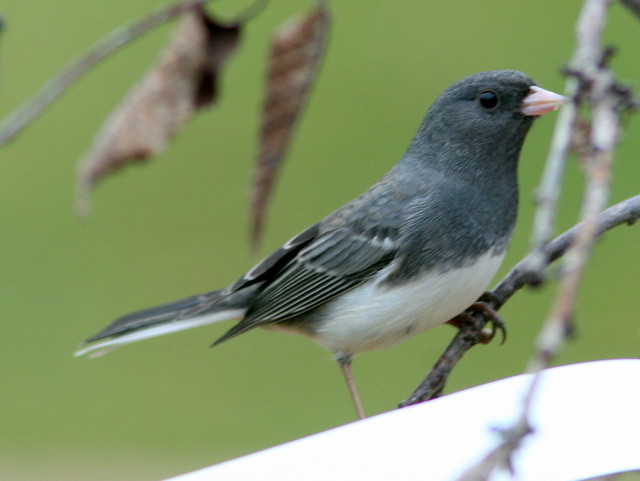
Juncos exhibit several other color patterns, including these Dark-eyed (Pink-sided and Gray-headed) Juncos, which I photographed in New Mexico:
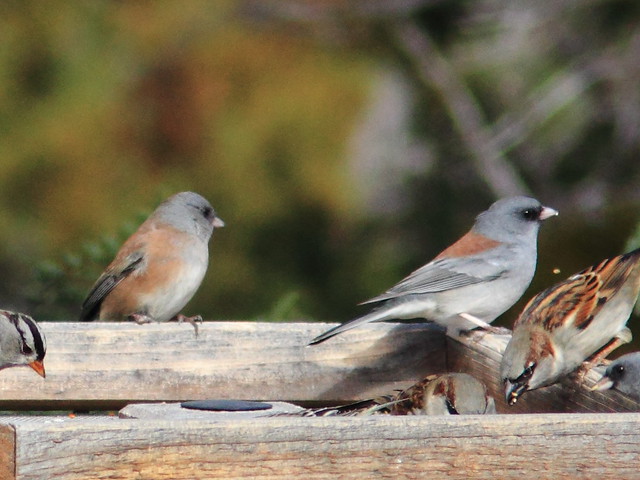
The introduced old-world House Sparrow deserves mention here:
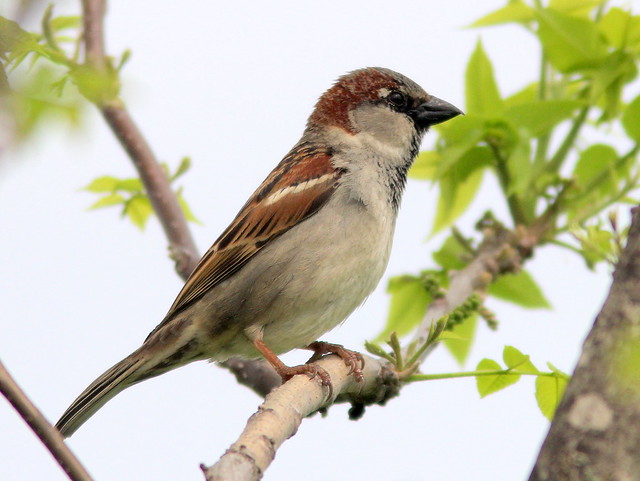


What beautiful birds .. Fantastic series of photos .. Happy Easter
ReplyDeleteYou have the makings of a sparrow bird book. Wonderful identifications.
ReplyDeleteTerrific tutorial on sparrow identification, Ken! Splendid photographs!
ReplyDelete